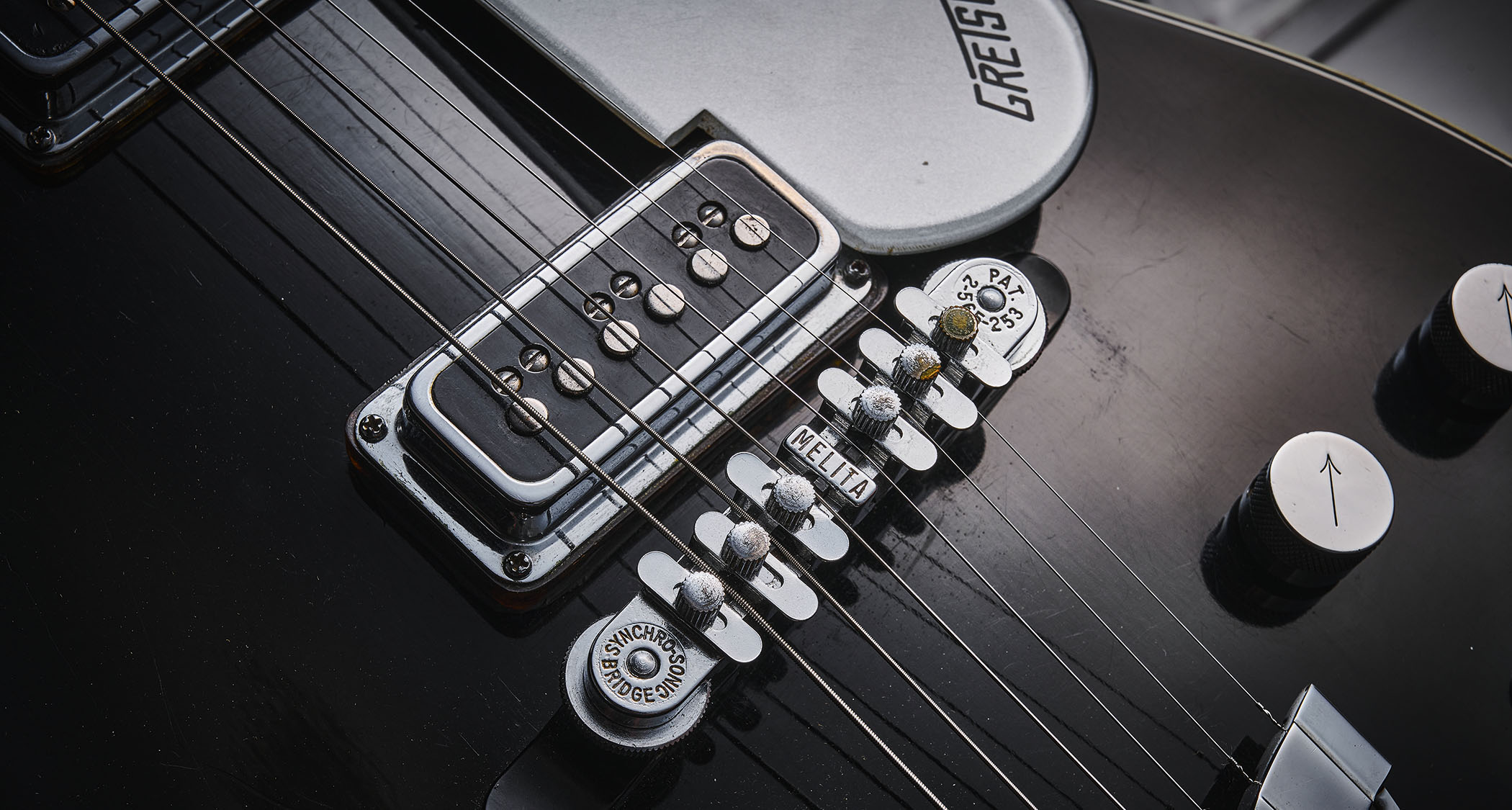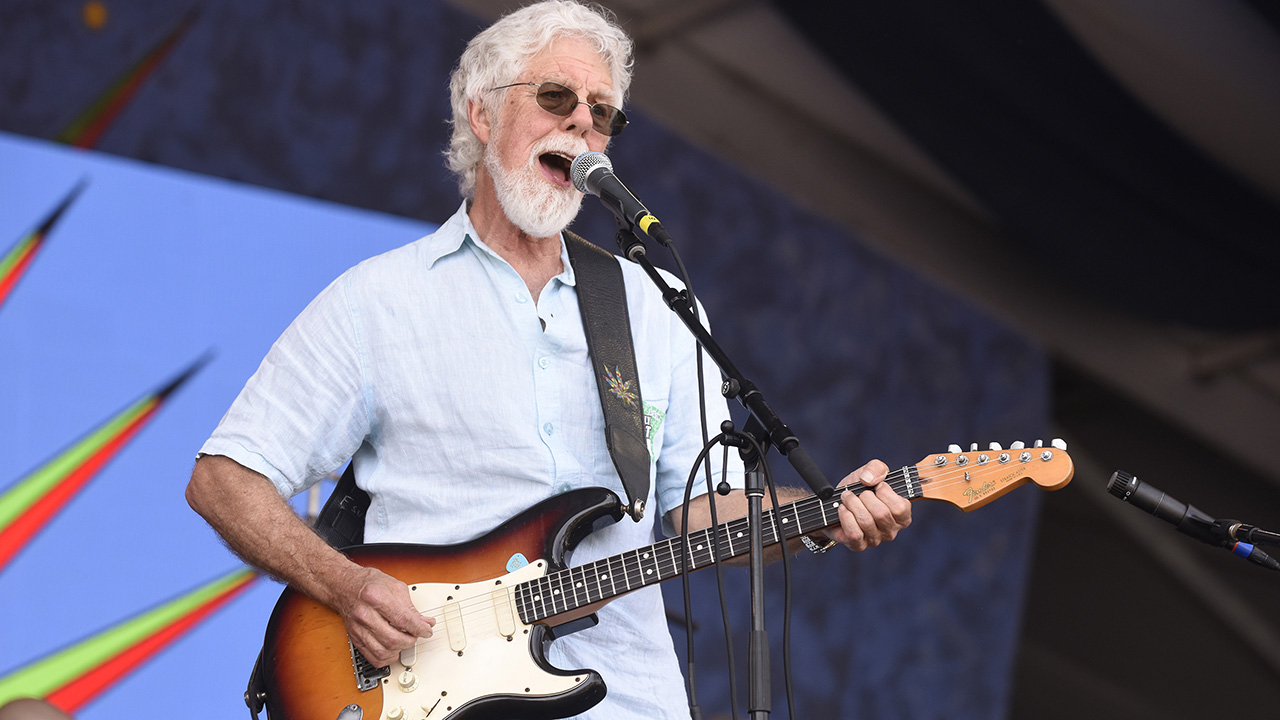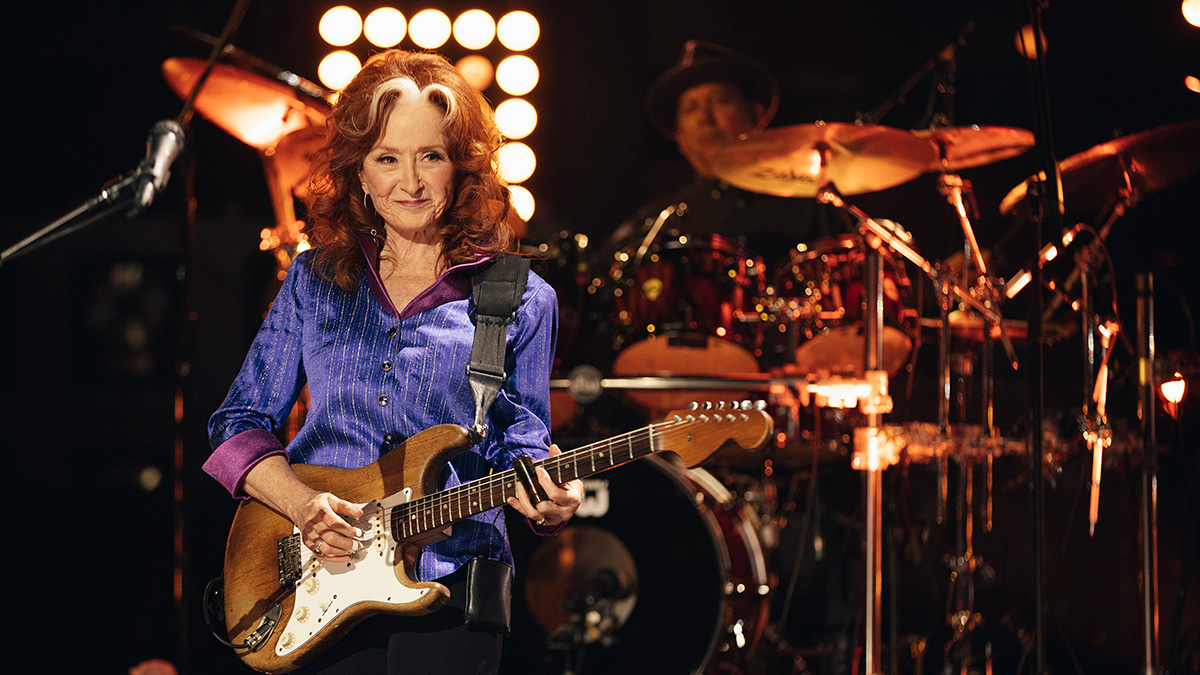“Some people think its gloss black top was a response to Gibson’s Les Paul Custom – but that didn’t launch officially until ’54”: The Duo Jet took Gretsch’s ’50s innovation to new heights – and was loved by George Harrison, Jeff Beck and Malcolm Young
As solid-bodied models began taking the guitar world by storm in the early ’50s, Gretsch joined the party with the revolutionary single-cut 6128 Duo Jet and its twangsome DeArmond ‘Dynasonic’ single coils

In the hagiography of rock ’n’ roll, Gibson and Fender guitars have the throne. In country, and particularly rockabilly, the big orange boxes of Gretsch are challengers. So spare a thought for an astonishingly good bit player, the Gretsch Duo Jet, which first appeared in 1953.
The ’50s were a time of extraordinary change and innovation in the musical instrument industry, with the electrification of guitars being the driving force.
Earlier in the 1932, the pioneering work of George Beauchamp, Adolf Rickenbacker and Paul Barth had led to the creation of Rickenbacker’s ‘Frying Pan’ A-series lap steels, and by 1936 Gibson was putting pickups on its acoustic archtops with the ES-150 following on from the EH-150 lap steel of the previous year.
Indeed, after Charlie Christian picked up his own Electric Spanish guitar in around 1937, he would go on to become the first electric guitar hero when he used the new instrument to solo like a horn with Benny Goodman’s band in ’39.
With volume, however, came feedback. The first recognisable solid-bodied ‘Spanish’ (namely, fretted) guitar appeared in ’48 when Paul Bigsby – Southern Californian inventor, engineer, motorcycle enthusiast and creator of the vibrato tailpiece – built it for noted country artist Merle Travis.

Bigsby’s one-offs for leading local performers paved the way for a radio repairman who, by ’49, had prototyped his Broadcaster, forerunner to the legendary Telecaster and the daddy of electric solidbodies: Leo Fender’s success caused a frenzy among competitors.
Meanwhile, successful entertainer Les Paul had failed to curry favour in his ‘Log’ – archtop sides around a solid, electrified centre block – but suddenly Gibson embraced him, and the Les Paul model emerged in ’52.
Get The Pick Newsletter
All the latest guitar news, interviews, lessons, reviews, deals and more, direct to your inbox!
Not long after, Gretsch – also a big name of the time in drums and basses – joined the solidbody fray and launched its not dissimilarly shaped 6128 Duo Jet in 1953. Some people think its gloss black top was a response to Gibson’s Les Paul Custom, but that didn’t launch officially until ’54, following its late-’53 prototypes… Perhaps Gretsch clocked one at a trade show.
Model Behaviour

The Les Paul was a solid block of mahogany, whereas the Duo Jet was routed or ‘chambered’, providing a question mark as to whether it should actually be referred to as a solidbody. It was also offered in other model incarnations, too, including the 6129 Silver Jet, which joined the ranks in 1954 with a showstopping silver sparkle finish.
The fixed arm variant on a Duo Jet deserves special mention; it was in the way when not in use, but it adds a unique shimmer for roots, ambient or soundtrack work
As a key endorser of the Gretsch name, Atkins’ relationship with the brand began in 1954 with the 6120, and that same year the 6130 Round-Up appeared, adorned with an orangey transparent wood finish and the ‘G’ brand that was used for Gretsch’s Western-themed models; this model provided the basis for the Chet Atkins 6121.
The Oriental Red-finished 6131 Jet Fire Bird was introduced in 1955, and a dark Cadillac Green gloss featured in small quantities in 1957.
The black, silver and likely red were first topped with Gretsch ‘Nitron’ laminate from the company’s drum line, but paint finishes succeeded within a couple of years. Other colours from Gretsch’s drum colour chart were reputedly offered, but only a single turquoise sparkle example supposedly exists.
A model with the off-white finish, gold glitter binding, paddle headstock and gold-plated hardware of Gretsch’s fancy White Falcon joined the catalogue in 1955; this was the rare 6134 White Penguin, now one of the most valuable (and collectible) Gretsch guitars.

Charmingly, Gretsch changed specs incessantly, so we can date its guitars of this period by their features. From its inception in 1953, the first 150 or so Duo Jets had the older curly-script headstock logo, then came the square-script logo in 1954 (see picture 3) known as a ‘T-roof’. Both are still in use.
A Bisgby vibrato tailpiece was optional. The fixed arm variant on a Duo Jet deserves special mention; it was in the way when not in use, but it adds a unique shimmer for roots, ambient or soundtrack work.
The early models all had twin DeArmond Model 2000 ‘Dynasonic’ pickups, which were modest output single coils, brighter and less powerful than Gibson’s P-90s (and therefore less popular with players looking to solo or drive their early amps), with a distinctive twang and bell-like gleam when combined in series in the middle position – a signature Gretsch sound.
Since single coil pickups are very sensitive to height, this writer has adjusted his models (pictured) with the excellent and easily installed TV Jones shims. Later models, specifically from 1958, feature Filter’Tron humbuckers, and Super’Tron units followed in the late 60s.

In 1957, Gretsch debuted its humbucking pickup, the Filter’Tron, at Chicago’s Summer NAMM Show, the same year that Gibson introduced its Patent Applied For (PAF) pickup. In electronics speak, ‘buck’ is the opposite of ‘boost’, describing how humbuckers literally ‘buck the hum’ from venue lights and other electricals that dogged players as they turned up.
These pickups comprise two similar but reverse-wound coils with opposite magnetic polarity connected in series. Debate over whether Seth Lover or Ray Butts got there first rages on to this day, but the internal structures of the two makers’ pickups yield markedly different sounds.
The taller, narrower coil forms of Gretsch’s Filter’Tron hold fewer turns of wire and have much lower DC resistance. A larger, stronger magnet than Gibson’s partly compensates, and the pickup’s narrower magnetic field gives a sound closer to single coils.

Gibson’s humbucking pickups were much more popular at the time, but changing tastes and the advent of more sophisticated amplifiers, and a legion of boost and drive pedals that extract nuance from pickups, have led to resurgent interest in Filter’Trons.
Crudely, they combine the warmth of humbuckers with the clarity of single coils. Versatile and articulate, they’re very fussy about the guitar’s circuit arrangement and component values. And they’re also fantastic on a Telecaster chassis in what’s known as a Cabronita or ‘little bastard’.
Early Duo Jet bridges were made by Sebastiano ‘Johnny’ Melita, and these were adjustable for overall position, height and individual string intonation like an over-engineered version of the tune-o-matic, which Gibson had begun introducing on top-end archtop models by ’54.
These effective, if sometimes brittle, cast metal units are now rather rare; they changed to a bar bridge in ’57 and then to the Space Control design through ’58/59. Neither allowed string intonation.

And so to an important force at Gretsch throughout the ’50s: Jimmie Webster was a professional New York musician, inventor, demonstrator and what we’d now call brand ambassador.
In hindsight, his influence was not always entirely positive. He drove constant model evolutions with a bewildering, ever-changing array of bridges, string mutes, knobs and switches, some of which mute, muffle or duplicate functions. Some believe the less said of his 1966 ‘Floating Sound Unit’, the better! Mercifully, the Duo Jet family escaped many of these excesses.
Fingerboard inlays were initially the large rectangular blocks shown on this example here (though the first 150 Duo Jets had no 1st fret marker). These became humped rectangles in ’57 and then thumbnails on the bass side in ’58.
Scarce left-handed examples often display thumbnails on both sides, indicating repurposed right-handed necks. (Contemporary Gibsons show similar disregard for lefties with headstock legend often upside down and dots on both sides of necks).
In this writer’s experience, the construction of older Gretsches can make them feel less substantial than their Gibson counterparts – and their tone reflects this. The necks can be very good, though, and much like Gibsons, earlier examples have skinnier frets.
Golden-era Duo Jets quite typically need neck resets. Guitarist contributor Huw Price informs that their neck joints deployed Martin’s traditional dovetail but were not as well executed. A good reset shouldn’t detract from value.

Changes continued with the introduction of an ‘Action Flo’ zero fret around ’59. By ’61, Gretsch had followed Gibson to double-cutaway bodies for better high-fret access, often with licenced vibrato units from the British Burns company. Both single- and double-cut shapes are arguably somewhat less elegant than Gibson’s.
Gene Vincent & His Blues Caps guitarist Cliff Gallup was an early Duo Jet user and inspired a young Jeff Beck, who sported his own with typically astonishing effect and dedicated an album, 1993’s Crazy Legs, to his hero and his guitar.
Bo Diddley’s 1959 Go Bo Diddley album cover featured a Red-finish 6131 Jet Fire Bird, not forgetting George Harrison’s extensive use with early/middle-period Beatles, while the double-cuts were forever immortalised by AC/DC’s Malcolm Young.
This writer traded a pretty but uninspiring ’65 Tea Burst Gibson ES-330 to broaden his collection of ’50s single cuts and got way, way more than he bargained for. A really great guitar with a distinct voice – one that can even get you through a loud blues jam!
Bob Wootton is a British guitar player and vintage collector.
Towards the end of a successful – and long – career in advertising he started writing and now contributes to various media on marketing, advertising and guitar-related matters, notably for the world-leading Guitarist magazine.
As tech for his friend and mentor, highly-regarded guitarist Alan Darby, he was part of Eric Clapton’s core team at his 2019 Crossroads fundraiser festival in Dallas. He now advises, mentors and assists other players.
He works regularly on the music scene around London, surrounding himself with better players to raise his game. Not difficult, some might say. He runs a couple of YouTube channels too.
Fender Japan assembles all-star group of elite Masterbuilders for its most ambitious builds yet – the Deck O’ Cards Stratocasters
“Vintage looks and performance at an accessible price”: Epiphone expands its high-end Inspired by Gibson Custom Collection – and introduces a key upgrade to its 1959 Les Paul Standard reissue











